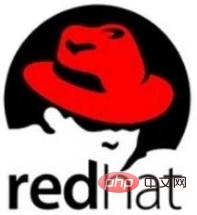What categories is Linux divided into?
Linux is divided into three categories: 1. Redhat system, mainly including Redhat, Centos, Fedora, etc., among which Centos system is the system chosen by many server users; 2. Debian system, mainly including Debian, Ubuntu, Mint, etc. , this system also has other derivative versions of the system; 3. Other systems, such as Gentoo, Arch Linux, LFS, etc.

#The operating environment of this tutorial: linux7.3 system, Dell G3 computer.
Newbies are often confused by the numerous Linux distributions. Let’s first explain this problem.
Technically speaking, Linux developed by Linus Torvalds is just a kernel. The kernel refers to a system software that provides device drivers, file systems, process management, network communications and other functions. The kernel is not a complete operating system, it is only the core of the operating system. Some organizations or manufacturers package the Linux kernel with various software and documents, and provide system installation interfaces and system configuration, setting and management tools, which constitutes a Linux distribution.
In the development process of the Linux kernel, various Linux distributions played a huge role. It was they that promoted the application of Linux, allowing more people to start paying attention to Linux. Therefore, it is actually inaccurate to directly refer to Red Hat, Ubuntu, SUSE, etc. as Linux. They are Linux distributions. To be more precise, they should be called "operating system software packages with Linux as the core."
Each distribution version of Linux uses the same Linux kernel, so there is no compatibility problem at the kernel layer. Each version has a different feeling, but it is only in the outermost layer of the distribution version (by the distribution version) Applications integrated and developed by vendors) are reflected.
Linux systems are mainly divided into Redhat system and Debian system. These two categories cover almost most commonly used Linux systems.
Redhat system mainly includes Redhat, Centos, Fedora, etc. Among them, the Centos system is the system chosen by many server users.
-
The Debian system mainly includes Debian, Ubuntu, Mint, etc. This system also has other derivatives.
In addition, there are some other systems, such as Gentoo, Arch Linux, LFS, etc.
A brief analysis of the user characteristics of these systems:
For development, most of them use the Redhat system, among which the Centos system is used by many enterprises The system used by the server.
For relatively simple development, you can choose the Debian system, preferably Ubuntu and mint.
There are also some users with relatively mature technologies who will choose Gentoo, LFS, Slackware, etc. from other systems.
Everything has its advantages and disadvantages, and the same goes for systems. There is no absolute good or bad. Only systems that are suitable for users to use and choose systems that they are good at using can bring out their own advantages. effect.
It's hard to say which one of the numerous Linux versions is better, each one has its own characteristics. Here are some commonly used Linux distributions.
1) Red Hat Linux

Red Hat (Red Hat) was founded in 1993 and is currently the world’s most senior Linux manufacturer and the most recognized Linux brand.
Red Hat's products mainly include RHEL (Red Hat Enterprise Linux, paid version) and CentOS (community clone version of RHEL, free version), Fedora Core (developed from the Red Hat desktop version, free version ).
Red Hat is the most widely used version of Linux in my country. It has rich information. If you don’t understand something, it’s easy to find someone to ask for advice. Moreover, most Linux tutorials use Red Hat as an example. explained (including this tutorial).
This tutorial takes CentOS, a Linux distribution commonly used by domestic Internet companies in my country, as an example. It is a product recompiled based on the Red Hat Enterprise Linux source code and removed the Red Hat trademark. It is not available for various operations and paid versions. difference and completely free. The disadvantage is that it does not provide technical support to users and does not bear any commercial responsibility. Strong companies can choose the paid version.
2) Ubuntu Linux

Ubuntu is developed based on the well-known Debian Linux. It has a friendly interface, is easy to use, and is very familiar with the hardware. The support is very comprehensive and it is currently the most suitable Linux distribution for desktop systems, and all Ubuntu distributions are available for free.
Mark Shuttleworth, the founder of Ubuntu, is a very legendary figure. After graduating from university, he founded a security consulting company that was acquired for $575 million in 1999, making him the youngest and most promising local millionaire in South Africa. An avid astronomy enthusiast, Mark Shuttleworth spent eight days on the International Space Station aboard a Russian Soyuz spacecraft at his own expense in 2002. Afterwards, Mark Shuttleworth founded the Ubuntu community, established the Ubuntu Foundation on July 1, 2005, and invested $10 million in the foundation. What he saw from space, he said, was the spirit behind his creation of Ubuntu. Today, what he is most passionate about is giving publicity speeches for free and open source Ubuntu.
3) SuSE Linux

SuSE Linux is based on Slackware Linux and was originally a Linux released by the German SuSE Linux AG company. The first version was released in 1994. In the early days, there was only a commercial version. After being acquired by Novell in 2004, the OpenSUSE community was established and launched its own community version of OpenSUSE.
SuSE Linux is more popular in Europe and has many applications in my country. It is worth mentioning that it draws on many characteristics of Red Hat Linux.
SuSE Linux can interact with Windows very easily. The hardware detection is very good. It has a user-friendly installation process and graphical management tools, which are very convenient for end users and administrators.
4) Gentoo Linux

Gentoo was originally created by Daniel Robbins (one of the developers of FreeBSD), the first stable version Released in 2002. Gentoo is the most complex to install among all Linux distributions. So far, source code packages are still used to compile and install the operating system.
However, it is the easiest to manage version after installation and is also the fastest version to run on the same hardware environment. Since Gentoo 1.0 came out, it has been like a storm, bringing huge surprises to the Linux world, and at the same time attracting a large number of users and developers to embrace Gentoo Linux.
Someone commented on Gentoo: fast, cleanly designed and flexible. It is famous for its high degree of customization (distribution based on source code). Although you can choose pre-compiled packages during installation, most users of Gentoo choose to compile them manually. This is why Gentoo is suitable for veterans with more experience in using Linux.
It should be noted that since compiling software takes a lot of time, if you compile all the software yourself and install larger software packages such as KDE desktop system, you may need to It takes a long time.
5) Other Linux distributions
In addition to the above four Linux distributions, there are many other versions. Table 1 lists several common ones. Linux distributions and their respective features:
| Version name | Website | Features | Package Manager |
|---|---|---|---|
| Debian Linux | www.debian.org | Open development model, And easy to upgrade software packages | apt |
| Fedora Core | www.redhat.com | has a large number of users , excellent community technical support. And there are many innovations | up2date(rpm),yum(rpm) |
| CentOS | www.centos.org | CentOS is a product of recompiling RHEL (Red Hat Enterprise Linux) source code. Since Linux is an operating system that develops source code, it does not exclude redistribution based on source code. CentOS is a commercial The source code of the Linux operating system RHEL is recompiled and distributed, and many known vulnerabilities have been corrected on the basis of RHEL | rpm |
| SUSE Linux | www.suse.com | Professional operating system, easy-to-use YaST software package management system | YaST (rpm), third-party apt (rpm) software library (repository) |
| Mandriva | www.mandriva.com | The operation interface is friendly, using graphical configuration tools, there is a huge community for technical support, and it supports NTFS partitions The size change | rpm |
| KNOPPIX | www.knoppix.com | can be run directly on the CD and has excellent Hardware detection and adaptation capabilities, can be used as a system rescue disk | apt |
| Gentoo Linux | www.gentoo.org | Highly customizable, complete user manual | portage |
| Ubuntu | www.ubuntu.com | Excellent The desktop environment used is built on Debian | apt |
Selection of Linux distributions
There are many Linux distributions. I will not introduce them one by one here. Here are some suggestions for friends who are worried about choosing a Linux distribution:
If you need a server system, and you are tired of various Linux configurations, and just want a more stable server system, then it is recommended that you choose CentOS or RHEL.
If you just need a desktop system, and you don’t want to use piracy, spend a lot of money to buy commercial software, customize it yourself, or waste too much time on the system, then You can choose Ubuntu.
If you want to explore all aspects of Linux in depth and customize your own Linux system very flexibly, then choose Gentoo and enjoy the freedom that Gentoo brings. .
If you have high requirements for system stability, you can consider FreeBSD.
If you need to use database advanced services and email network applications, you can choose SuSE.
Related recommendations: "Linux Video Tutorial"
The above is the detailed content of What categories is Linux divided into?. For more information, please follow other related articles on the PHP Chinese website!

Hot AI Tools

Undresser.AI Undress
AI-powered app for creating realistic nude photos

AI Clothes Remover
Online AI tool for removing clothes from photos.

Undress AI Tool
Undress images for free

Clothoff.io
AI clothes remover

Video Face Swap
Swap faces in any video effortlessly with our completely free AI face swap tool!

Hot Article

Hot Tools

Notepad++7.3.1
Easy-to-use and free code editor

SublimeText3 Chinese version
Chinese version, very easy to use

Zend Studio 13.0.1
Powerful PHP integrated development environment

Dreamweaver CS6
Visual web development tools

SublimeText3 Mac version
God-level code editing software (SublimeText3)

Hot Topics
 1386
1386
 52
52
 How to use docker desktop
Apr 15, 2025 am 11:45 AM
How to use docker desktop
Apr 15, 2025 am 11:45 AM
How to use Docker Desktop? Docker Desktop is a tool for running Docker containers on local machines. The steps to use include: 1. Install Docker Desktop; 2. Start Docker Desktop; 3. Create Docker image (using Dockerfile); 4. Build Docker image (using docker build); 5. Run Docker container (using docker run).
 Difference between centos and ubuntu
Apr 14, 2025 pm 09:09 PM
Difference between centos and ubuntu
Apr 14, 2025 pm 09:09 PM
The key differences between CentOS and Ubuntu are: origin (CentOS originates from Red Hat, for enterprises; Ubuntu originates from Debian, for individuals), package management (CentOS uses yum, focusing on stability; Ubuntu uses apt, for high update frequency), support cycle (CentOS provides 10 years of support, Ubuntu provides 5 years of LTS support), community support (CentOS focuses on stability, Ubuntu provides a wide range of tutorials and documents), uses (CentOS is biased towards servers, Ubuntu is suitable for servers and desktops), other differences include installation simplicity (CentOS is thin)
 What to do if the docker image fails
Apr 15, 2025 am 11:21 AM
What to do if the docker image fails
Apr 15, 2025 am 11:21 AM
Troubleshooting steps for failed Docker image build: Check Dockerfile syntax and dependency version. Check if the build context contains the required source code and dependencies. View the build log for error details. Use the --target option to build a hierarchical phase to identify failure points. Make sure to use the latest version of Docker engine. Build the image with --t [image-name]:debug mode to debug the problem. Check disk space and make sure it is sufficient. Disable SELinux to prevent interference with the build process. Ask community platforms for help, provide Dockerfiles and build log descriptions for more specific suggestions.
 How to view the docker process
Apr 15, 2025 am 11:48 AM
How to view the docker process
Apr 15, 2025 am 11:48 AM
Docker process viewing method: 1. Docker CLI command: docker ps; 2. Systemd CLI command: systemctl status docker; 3. Docker Compose CLI command: docker-compose ps; 4. Process Explorer (Windows); 5. /proc directory (Linux).
 What computer configuration is required for vscode
Apr 15, 2025 pm 09:48 PM
What computer configuration is required for vscode
Apr 15, 2025 pm 09:48 PM
VS Code system requirements: Operating system: Windows 10 and above, macOS 10.12 and above, Linux distribution processor: minimum 1.6 GHz, recommended 2.0 GHz and above memory: minimum 512 MB, recommended 4 GB and above storage space: minimum 250 MB, recommended 1 GB and above other requirements: stable network connection, Xorg/Wayland (Linux)
 Detailed explanation of docker principle
Apr 14, 2025 pm 11:57 PM
Detailed explanation of docker principle
Apr 14, 2025 pm 11:57 PM
Docker uses Linux kernel features to provide an efficient and isolated application running environment. Its working principle is as follows: 1. The mirror is used as a read-only template, which contains everything you need to run the application; 2. The Union File System (UnionFS) stacks multiple file systems, only storing the differences, saving space and speeding up; 3. The daemon manages the mirrors and containers, and the client uses them for interaction; 4. Namespaces and cgroups implement container isolation and resource limitations; 5. Multiple network modes support container interconnection. Only by understanding these core concepts can you better utilize Docker.
 What is vscode What is vscode for?
Apr 15, 2025 pm 06:45 PM
What is vscode What is vscode for?
Apr 15, 2025 pm 06:45 PM
VS Code is the full name Visual Studio Code, which is a free and open source cross-platform code editor and development environment developed by Microsoft. It supports a wide range of programming languages and provides syntax highlighting, code automatic completion, code snippets and smart prompts to improve development efficiency. Through a rich extension ecosystem, users can add extensions to specific needs and languages, such as debuggers, code formatting tools, and Git integrations. VS Code also includes an intuitive debugger that helps quickly find and resolve bugs in your code.
 How to switch Chinese mode with vscode
Apr 15, 2025 pm 11:39 PM
How to switch Chinese mode with vscode
Apr 15, 2025 pm 11:39 PM
VS Code To switch Chinese mode: Open the settings interface (Windows/Linux: Ctrl, macOS: Cmd,) Search for "Editor: Language" settings Select "Chinese" in the drop-down menu Save settings and restart VS Code



